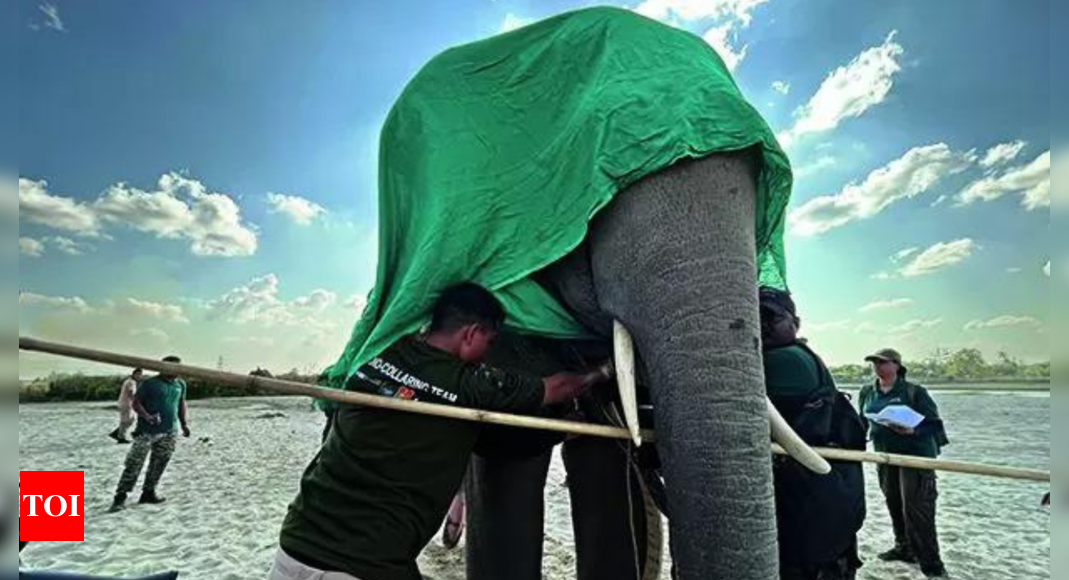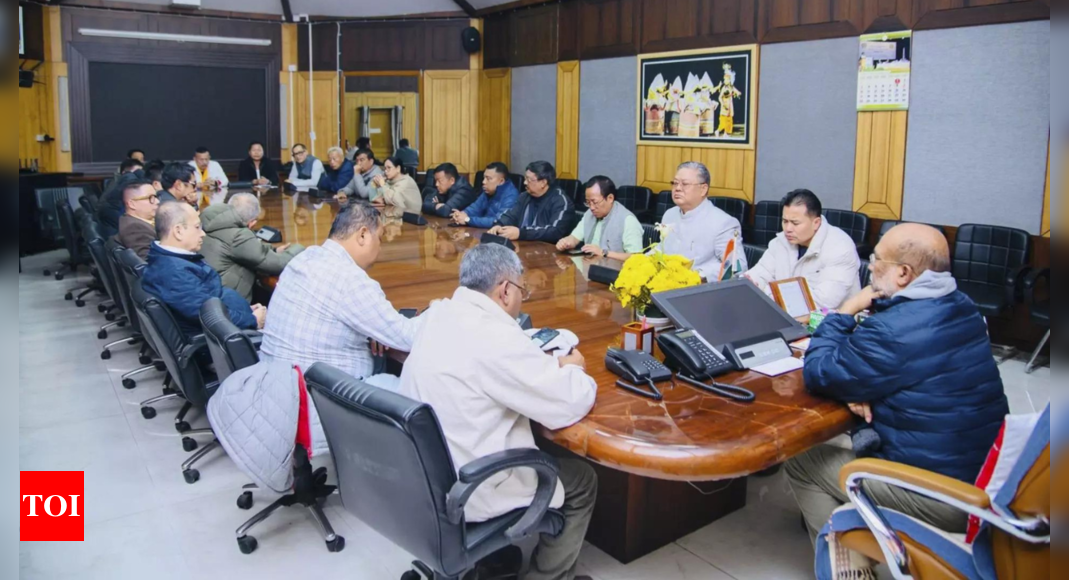
GUWAHATI: Towering silhouettes emerge from the edge of the Bhutanese foothills along the northern bank of Brahmaputra in Assam, where dense forests meet sprawling paddy fields. The tranquility of night is shattered by rumbling trumpets of a herd of 80 wild elephants – led by a matriarch and a tusker, its ivory glinting in the moonlight.
As the herd moves into the fields, the landscape transforms into a scene of organised chaos. The golden paddy stalks, heavy with ripened grain, snap under the weight of massive feet. Some elephants use their trunks to pluck the stalks, munching noisily, while others roll in the mud-lined fields, enjoying the cool respite.
Villagers, frozen in fear and awe, scramble to alert others. Children are whisked away to safety. Shouts ring through the air as people bang metal utensils and light torches, hoping to steer the herd back toward the forest.
The elephants remain undeterred, focused on their feast. They eventually begin to retreat, their colossal forms blending into the greenery as suddenly as they appeared. As the herd vanishes, the fields are left flattened. Villagers lament the destruction of their hard-earned harvest.
Such raids repeat often in Udalguri, Baksa and Tamulpur. Wild elephants descend from the hills of Bhutan, consume paddy crops and in some cases, claim human lives. It is a reminder of the fragile balance between humans and wildlife, as elephant herds continue their centuries-old migratory patterns.
So, who will bell the elephants? Forest department is optimistic about a radio collaring initiative to reduce conflicts. Once fitted, the collar transmits hourly location updates via satellite, helping officials track elephants’ movements in real time and issue timely alerts to villagers. The data gathered will also provide valuable insights into how elephants adapt to shrinking habitats and expanding human activity.
The collar, equipped with a small radio transmitter and battery, is expected to last up to three-and-a-half years. The equipment sourced from South Africa costs around Rs 8 lakh apiece. The first phase of this operation, conducted on Nov 18, saw successful radio collaring of a 30-year-old tusker from the herd of 80. The matriarch from the same herd will be fitted with a collar soon. Forest officials explain that while male elephants may leave their groups, females usually remain, making them reliable trackers for monitoring herd movement.
While this herd is currently the focus, another group of 40 elephants remains in Bhutan and nearby forests in Tamulpur. Radio collaring for this herd will be carried out in the next phase of the project. “This year, the herds ventured further to Nalbari. After lingering briefly, it returned to Baksa,” said DFO Golap Bania.
Wildlife expert Bibhab Talukdar highlighted the broader implications of the project. “From the landscape encompassing districts along Brahmaputra’s northern bank to the contiguous forests in Bhutan, historical elephant movement spans about 300km, reaching north Bengal. Radio collaring will reveal changes in movement patterns influenced by emerging human settlements,” he said.
The initiative is a collaborative effort involving NGO Aaranyak, forest department, and Baksa administration.







